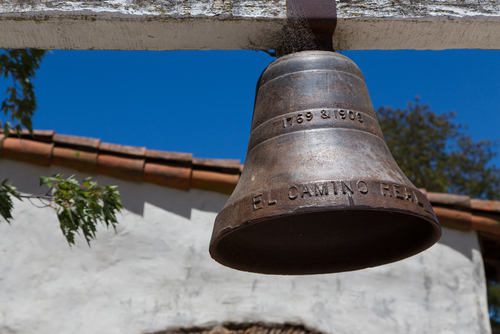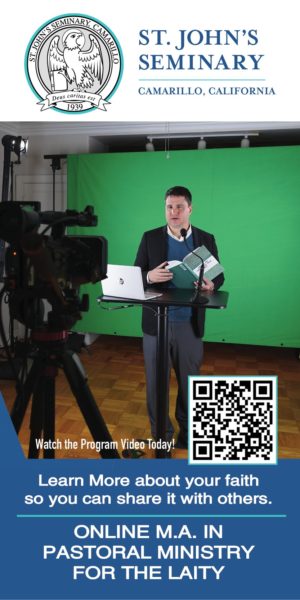Two hundred and fifty years ago, on July 1, 1769, St. Junípero Serra arrived at the port of San Diego, having journeyed on foot for more than five months from Loreto, Mexico.
He celebrated a Mass of thanksgiving the next day, and the first of the 21 California missions, San Diego de Alcalá, was established two weeks later, serving the indigenous Kumeyaay peoples.
Serra was a 56-year-old Franciscan friar when he came to California; he suffered from asthma and a chronic, near-crippling leg infection. He had come to the New World from Spain nearly 20 years earlier, leaving behind his family and a comfortable career teaching theology.
When he first set eyes on the native peoples of California, he literally kissed the ground and gave thanks to God. In his diaries and letters, he left beautiful descriptions of their creativity and dignity, their love for the land, and their worship of the Creator.
Late in his life he would write: “The trust they have in us is based on the fact that … we have given them birth in Christ. We have all come here and remained here for the sole purpose of their well-being and salvation. And I believe everyone realizes we love them.”
As I have shared before, I have a strong devotion to St. Junípero. So, I was saddened to read recently that the University of California at Santa Cruz has removed the El Camino Real mission bell on its campus, calling it a symbol of racism and the “dehumanization” of native peoples.
St. Junípero has long been misunderstood and, in my opinion, wrongly used as a symbol for the tragic abuses committed against California’s first peoples.
The Archdiocese of Los Angeles is the home of many native peoples, including four nations whose sacred homelands lie within our borders — the Chumash, the Tataviam, the Tongva, and the Acjachemen.
And since coming here, I am continuing to learn and discern about the deep injustices suffered by California’s original peoples, the painful losses and destruction of their ancient way of life, the spiritual wounds that run generations deep.
I hope that Gov. Gavin Newsom’s recent apology to California’s original peoples will help in the long process of healing these historic wounds. I hope it will also inspire new reflection on our history.
The governor’s apology is rooted in well-documented facts. In the 1850s, California’s secular government pursued what the state’s first governor called “a war of extermination … to be waged between the two races until the Indian race becomes extinct.”
This is the truth. But it is important to remember that this history has nothing to do with St. Junípero or the missions. By the time California declared its “race war” and the U.S. Cavalry was called in to support these genocidal policies, St. Junípero was long dead and the missions had been closed or “secularized” for nearly two decades.
In fact, the loss of an authoritative Christian voice in California society meant the indigenous peoples in the 1850s had no one to defend their rights in the face of state-sanctioned violence and the ruthless appetites of ranchers, soldiers, and mining interests.
History is never simple. The facts matter, the truth matters, and distinctions are necessary. We cannot learn the lessons of history or heal the wounds of the past, unless we first understand what really happened and why.
The missionaries were not perfect and the missionary system was not either. The missionaries made mistakes and caused real harm to people. Their motives, however, were evangelical and humanitarian. They learned the languages and traditions of the people they served and had the intention of improving their lives.
These are the conclusions of the best scholars of St. Junípero and the missions, including the Native American archeologist Ruben Mendoza, historians Rose Marie Beebe and Robert Senkewicz, and Gregory Orfalea, who has written both a beautiful biography and a fine book for young people about the saint.
The truth that we learn from these scholars is that St. Junípero spent his entire time in California courageously defending the rights of the indigenous peoples he loved.
When the Kumeyaay attacked the San Diego mission in 1775, killing three people, including one of Padre Serra’s close friends, the law was clear — the attackers should be hanged.
It was St. Junípero who appealed for mercy. “As to the killer, let him live so that he can be saved, for that is the purpose of our coming here and its sole justification,” he wrote.
This is the sole reason he came to California, to share the greatest gift he could imagine to offer — the knowledge of Jesus Christ and his salvation.
Pray for me this week and I will pray for you.
And let us ask Our Lady of Guadalupe, Mother of the New World, to help us all to go forward together as one family, each of us a child of God.

